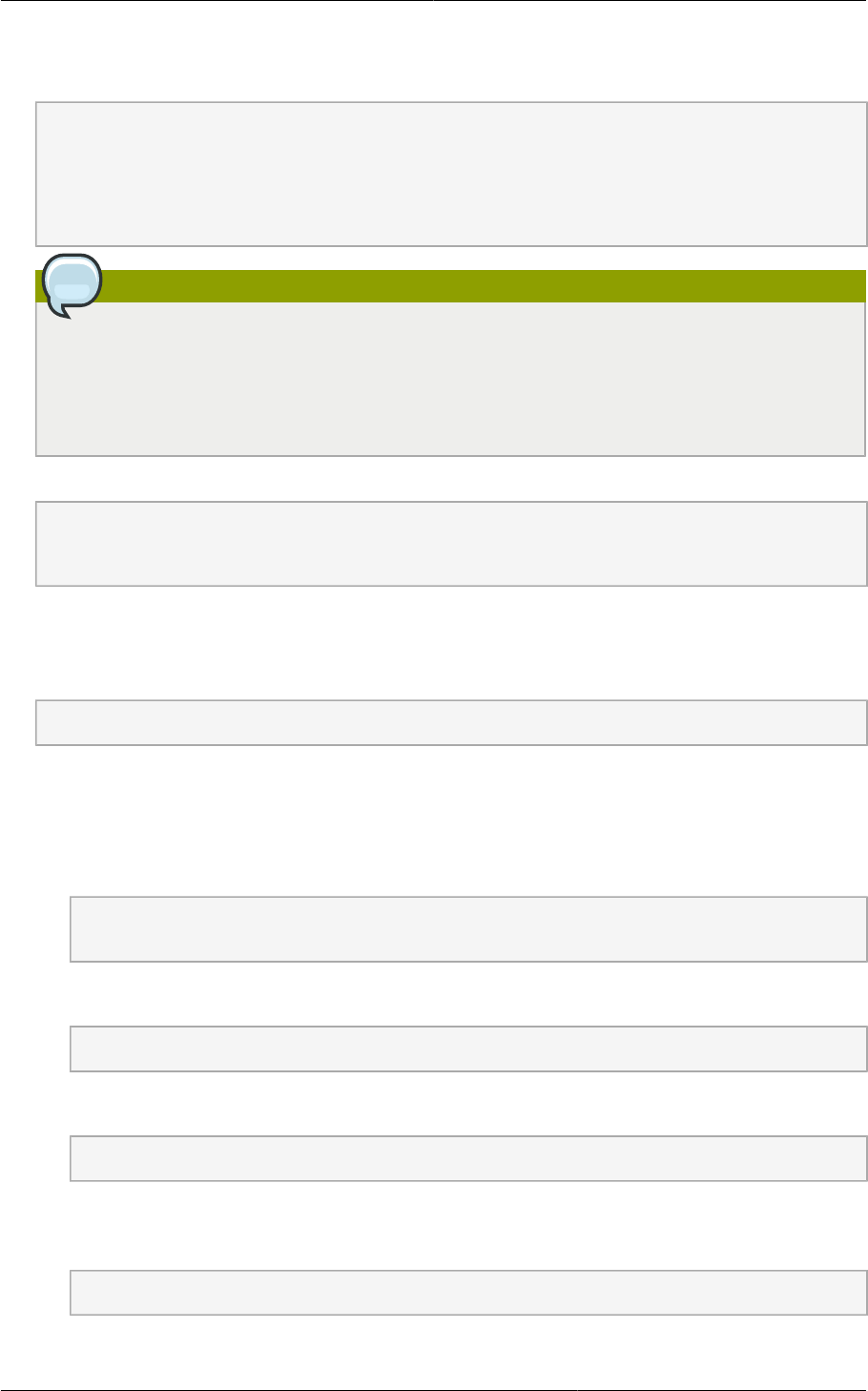
Install and Configure the Database
51
The max_connections parameter should be set to 350 multiplied by the number of Management
Servers you are deploying. This example assumes one Management Server.
innodb_rollback_on_timeout=1
innodb_lock_wait_timeout=600
max_connections=350
log-bin=mysql-bin
binlog-format = 'ROW'
Note
The binlog-format variable is supported in MySQL versions 5.1 and greater. It is not
supported in MySQL 5.0. In some versions of MySQL, an underscore character is used in
place of the hyphen in the variable name. For the exact syntax and spelling of each variable,
consult the documentation for your version of MySQL.
5. Restart the MySQL service, then invoke MySQL as the root user.
# service mysqld restart
# mysql -u root
6. Best Practice: MySQL does not set a root password by default. It is very strongly recommended
that you set a root password as a security precaution. Run the following commands, and
substitute your own desired root password.
mysql> SET PASSWORD = PASSWORD('password');
From now on, start MySQL with mysql -p so it will prompt you for the password.
7. To grant access privileges to remote users, perform the following steps.
a. Run the following commands from the mysql prompt:
mysql> GRANT ALL PRIVILEGES ON *.* TO 'root'@'%' WITH GRANT OPTION;
mysql> exit
b. Restart the MySQL service.
# service mysqld restart
c. Open the MySQL server port (3306) in the firewall to allow remote clients to connect.
# iptables -I INPUT -p tcp --dport 3306 -j ACCEPT
d. Edit the /etc/sysconfig/iptables file and add the following line at the beginning of the INPUT
chain.
-A INPUT -p tcp --dport 3306 -j ACCEPT


















